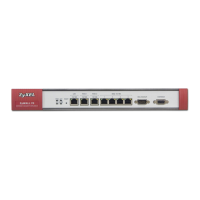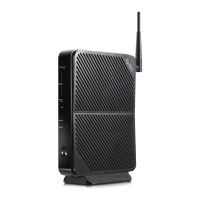Chapter 20 Certificates
ZyWALL 5/35/70 Series User’s Guide
405
Issuer This field displays identifying information about the certificate’s issuing
certification authority, such as Common Name, Organizational Unit,
Organization and Country.
With self-signed certificates, this is the same as the Subject Name field.
Signature Algorithm This field displays the type of algorithm that was used to sign the certificate. The
ZyWALL uses rsa-pkcs1-sha1 (RSA public-private key encryption algorithm and
the SHA1 hash algorithm). Some certification authorities may use rsa-pkcs1-
md5 (RSA public-private key encryption algorithm and the MD5 hash algorithm).
Valid From This field displays the date that the certificate becomes applicable. The text
displays in red and includes a Not Yet Valid! message if the certificate has not
yet become applicable.
Valid To This field displays the date that the certificate expires. The text displays in red
and includes an Expiring! or Expired! message if the certificate is about to expire
or has already expired.
Key Algorithm This field displays the type of algorithm that was used to generate the
certificate’s key pair (the ZyWALL uses RSA encryption) and the length of the
key set in bits (1024 bits for example).
Subject Alternative
Name
This field displays the certificate owner‘s IP address (IP), domain name (DNS)
or e-mail address (EMAIL).
Key Usage This field displays for what functions the certificate’s key can be used. For
example, “DigitalSignature” means that the key can be used to sign certificates
and “KeyEncipherment” means that the key can be used to encrypt text.
Basic Constraint This field displays general information about the certificate. For example,
Subject Type=CA means that this is a certification authority’s certificate and
“Path Length Constraint=1” means that there can only be one certification
authority in the certificate’s path.
MD5 Fingerprint This is the certificate’s message digest that the ZyWALL calculated using the
MD5 algorithm.
SHA1 Fingerprint This is the certificate’s message digest that the ZyWALL calculated using the
SHA1 algorithm.
Certificate in PEM
(Base-64) Encoded
Format
This read-only text box displays the certificate or certification request in Privacy
Enhanced Mail (PEM) format. PEM uses 64 ASCII characters to convert the
binary certificate into a printable form.
You can copy and paste a certification request into a certification authority’s web
page, an e-mail that you send to the certification authority or a text editor and
save the file on a management computer for later manual enrollment.
You can copy and paste a certificate into an e-mail to send to friends or
colleagues or you can copy and paste a certificate into a text editor and save the
file on a management computer for later distribution (via floppy disk for
example).
Apply Click Apply to save your changes back to the ZyWALL. You can only change
the name, except in the case of a self-signed certificate, which you can also set
to be the default self-signed certificate that signs the imported trusted remote
host certificates.
Cancel Click Cancel to quit and return to the My Certificates screen.
Table 114 SECURITY > CERTIFICATES > My Certificates > Details (continued)
LABEL DESCRIPTION

